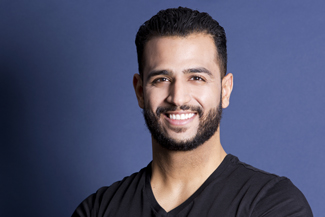When you are using Invisalign in Cornwall, this orthodontic tool performs like a brace, but actually it is not a brace in the traditional sense at all. Come to Archway Dental Surgery to find out more.
For one thing, you’re unlikely to ever notice somebody wearing this aligner, especially when compared to a brace. Here we talk more about their advantages and differences.
Invisalign in Cornwall comprises a set of clear plastic aligners, each playing the role of pushing your teeth further towards a desired final position. Unlike a brace, which is placed on your teeth and then adjusted throughout the treatment by an orthodontist using wires and brackets, invisible aligners are pre-designed with all of those adjustments worked into the final set of aligners. What makes this possible is the capturing of a 3D model of your teeth, which is then used to calibrate an anatomically correct simulation of your mouth.
From there, we can make all the adjustments we wish to by moving your teeth from their starting position to the idealised endpoint.
With the start and end points set, the aligner can now work it’s real magic. Each aligner is developed alongside a set software that, once you have given it a start and finish location of the teeth, can plot a smooth transition from one to the other.
This technology accurately calculates the amount of force that would be required to alter the position of the teeth every step of the way; this is called a vector map. From these vector maps, the aligners are designed and once they are placed over the patient’s teeth, they will generate the desired forces to allow them to achieve that final end state. This method of manufacturing all of the orthodontic corrections into the aligners provides several big advantages.
One is saving the time of highly trained dental professionals. The other is saving the patient’s time by reducing the number of visits they require during the course of their treatment with Invisalign in Cornwall. The third is allowing each of the adjustments to be done far more incrementally; one aligner is changed every two weeks, unlike an orthodontic tightening of a traditional brace that occurs every four weeks. These larger changes, mixed with the more uncomfortable materials used in traditional braces can make dental orthodontic adjustments very uncomfortable; this is far less of an issue using clear aligners
This is a very different way of seeing orthodontics and by having a series of aligners which are only expected to operate for two weeks each, it means they can be far thinner, lighter and generally more convenient than a brace ever could.
But with these advantages come a set of potential issues; you as the patient are responsible for keeping the aligner in your mouth for the set period, and the temptation to remove it can prove problematic. If you fail to keep the aligners in your mouth for the set time, your teeth may revert into their former positions, and you may have to start treatment from the beginning again, wasting both time and money.
Also, a thinner aligner has the potential to become damaged, which can create a delay in the treatment while our team orders a replacement aligner. To avoid these issues, keep your aligners in their protective casing when they are not in your mouth.
